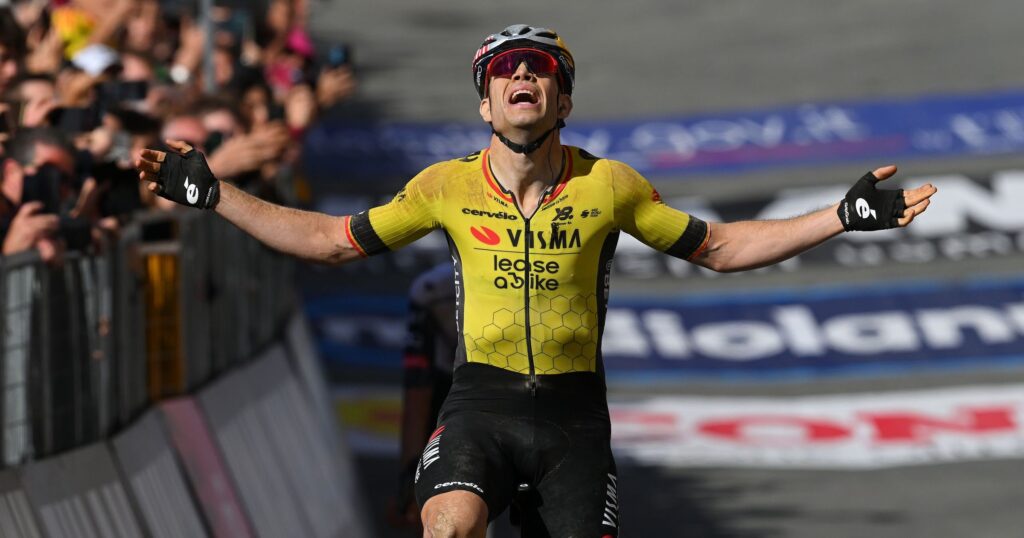The Giro d’Italia made an impressive return to the iconic white roads of Tuscany, captivating fans and participants alike with an event filled with excitement and unpredictability. As soon as the peloton encountered the famous chalky paths, the race experienced a dramatic shift characterized by chaos and turmoil. The day did not start smoothly; a significant crash occurred almost immediately after the riders transitioned onto the gravel terrain, splintering the group and creating a challenging environment for everyone involved. The unfortunate incident exemplified the unpredictable nature of this iconic cycling event, as riders struggled to regain their composure on the treacherous surface.
Amidst the turmoil, the race saw the emergence of two extraordinary contenders, Wout van Aert of Team Visma-Lease a Bike and Isaac del Toro from UAE Team Emirates-XRG. While many cyclists faced setbacks, both athletes displayed remarkable fortitude and resilience. These two competitors entered a thrilling duel, fighting for supremacy as they approached the historic finish line situated in Siena’s bustling Piazza del Campo. Their competition was not just a testament to their skill but also an illustration of their unwavering determination to prevail against all odds.
In the climactic moments of the race, Wout van Aert leveraged his considerable experience, strategically pressuring the younger Isaac del Toro. As they ascended the challenging Via Caterina slope, Van Aert cleverly prompted Del Toro to take the lead, allowing him to expend his energy before executing a powerful maneuver that would ultimately seal his victory. By deftly navigating the final bends leading into the historic piazza, Van Aert claimed a triumph that will be remembered for years to come, marking a moment of redemption for the renowned racer.
On the other hand, while Wout van Aert celebrated his victory, Isaac del Toro also had significant reason to rejoice. By securing his first pink jersey, the symbolic maglia rosa of the race, Del Toro established a solid foothold in the general classification, finishing with an impressive lead of over a minute. His performance showcased not only his raw talent but also his capability to thrive under pressure, which is especially important as a younger competitor in a field filled with seasoned racers.
The dynamics of the race further unfolded with the involvement of Del Toro’s teammate, Juan Ayuso, who, despite losing time in the overall standings, managed to extend his lead over a competitive rival, Primož Roglič of Red Bull-Bora-Hansgrohe. The intensity of the match-ups within the peloton was palpable, with tension running high as Roglič found himself over a minute behind Ayuso. This shift in standing emphasized the unpredictability of cycling, where alliances and rivalries continually shape the narrative of the race.
As the Giro d’Italia progresses, the events of this particular stage weave an intricate tapestry that illustrates the complexities and challenges inherent in professional cycling. With a mixture of strategy, physical endurance, camaraderie, and rivalry, the race not only highlights the competitors’ athleticism but also captures the excitement and unpredictability that enthrall cycling enthusiasts around the globe. The environment of the white roads in Tuscany, combined with the historical significance of Siena’s Piazza del Campo, adds layers of richness to the competition, making it an unforgettable chapter in the storied history of the Giro d’Italia. In conclusion, the day was marked by triumphs, heartaches, and formations of alliances that could shape the outcome of the race in the coming stages.



